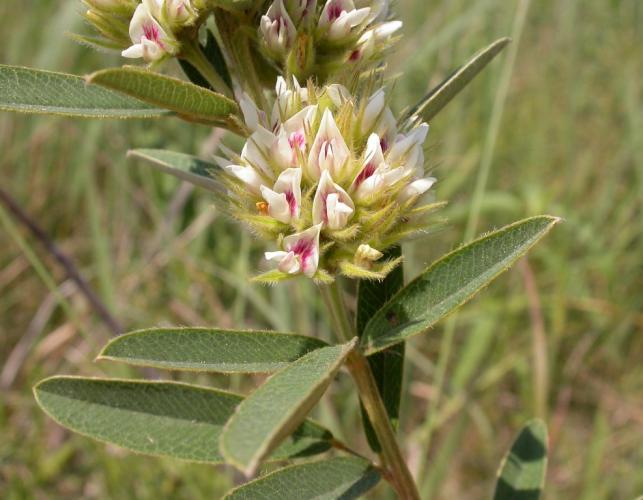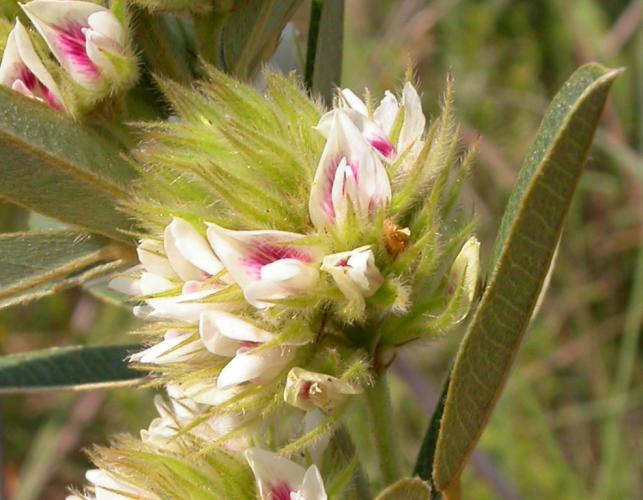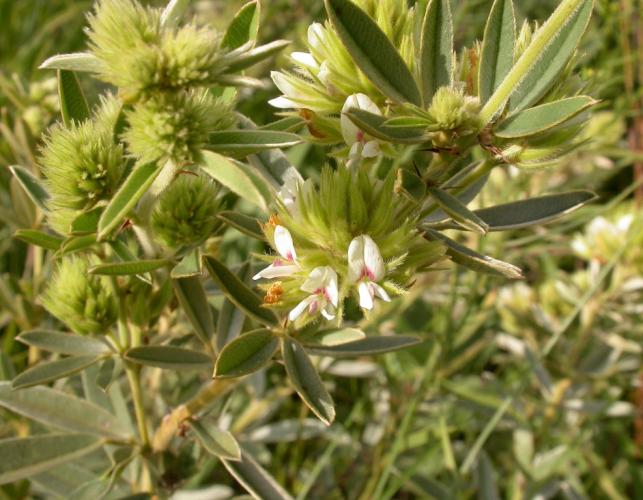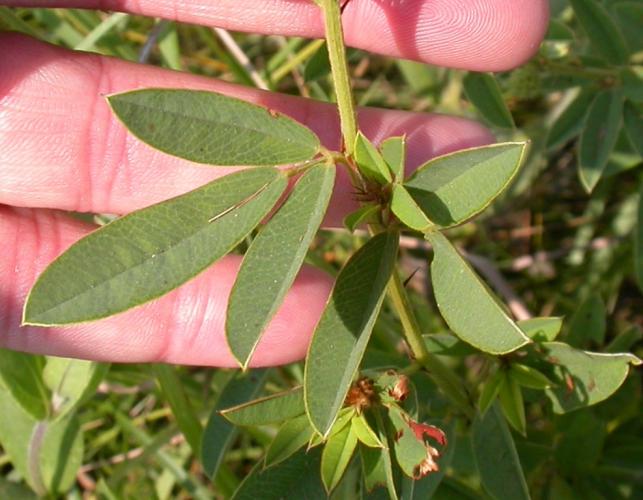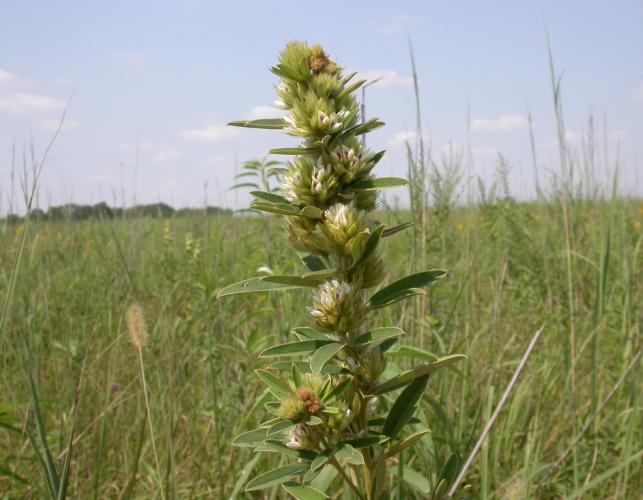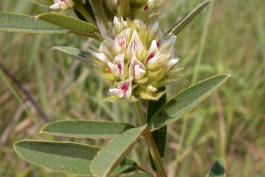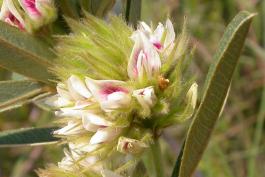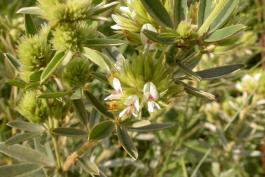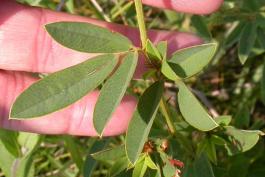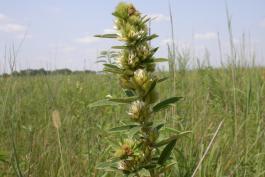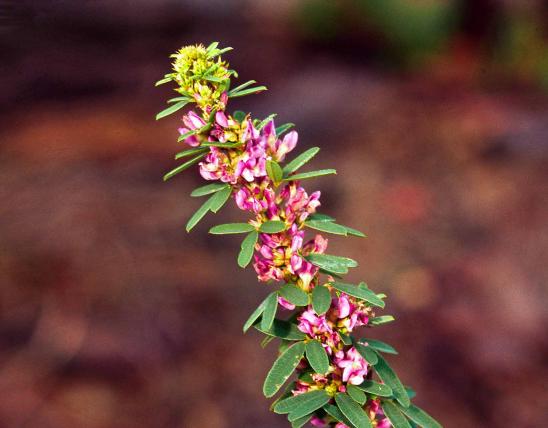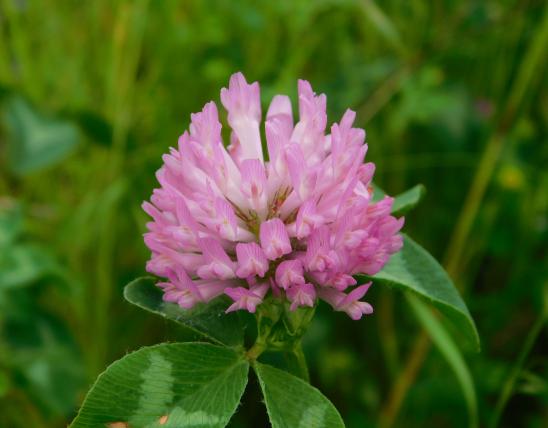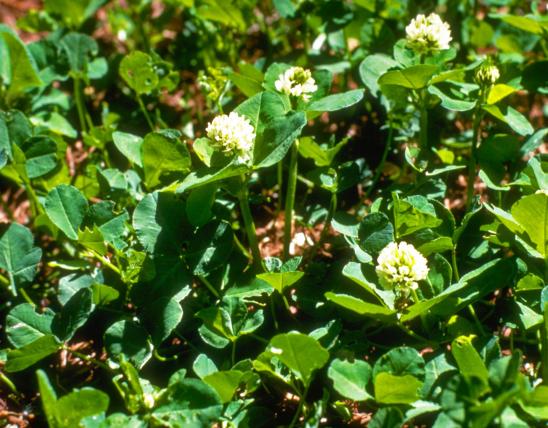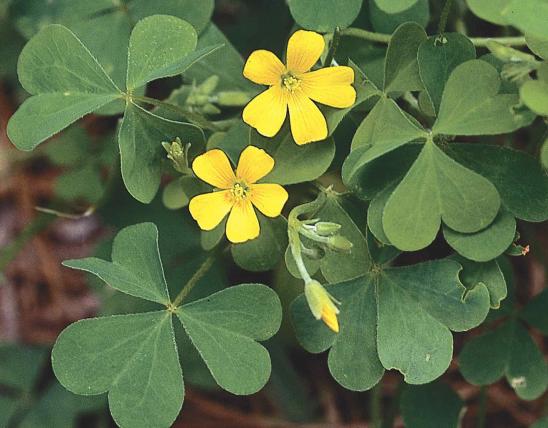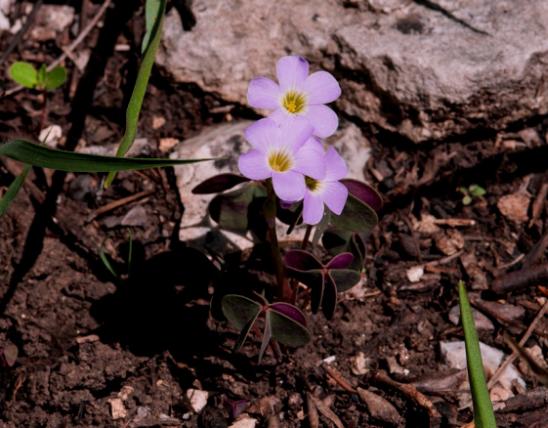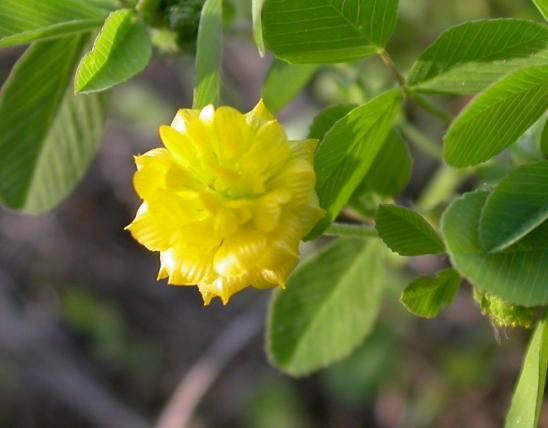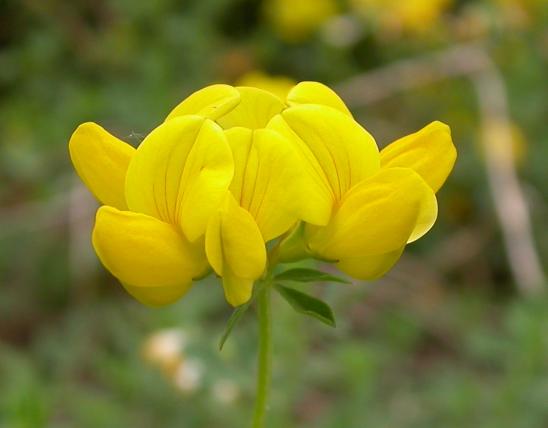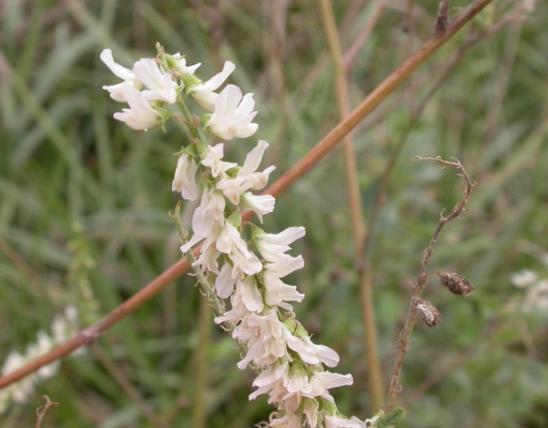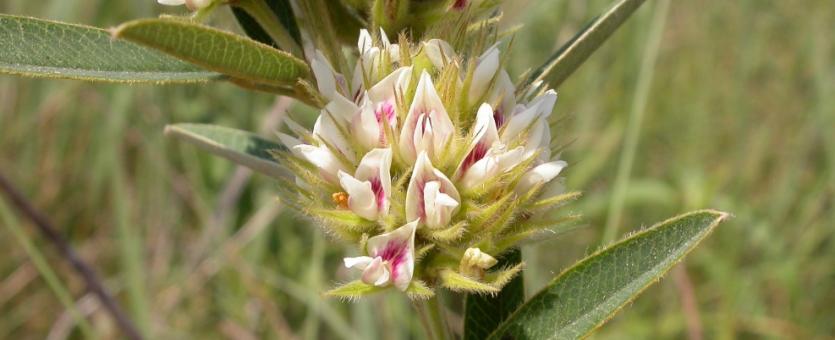
Round-headed bush clover is a stiffly upright, perennial herb that has rounded flower clusters with cream-colored, pea-shaped flowers with purple markings on the banner petal. The plant is usually covered with fine, silvery hairs. It grows statewide in open habitats.
The leaves are alternate, short-stalked, and trifoliate (compound with 3 leaflets). Where the leaf stalks join the stem, there is a pair of very narrowly triangular or hairlike stipules less than ¼ inch long. Leaflets are variable in shape; they are often elliptical or “football-shaped.” The leaf veins are conspicuous. Hairiness varies; it is usually more hairy on the undersides of the leaves. The upper leaves, near the flower heads, are not well developed.
Flower heads are mostly at the axils of the upper leaves. They are short, dense, rounded clusters of 16–40 pea-shaped flowers. The petals are cream-colored, with purple markings on the top (banner) petal. The flower heads turn brown with age. Blooms July–October.
Similar species: Missouri has about 11 species in genus Lespedeza, called bush clovers or lespedezas. Some are native and some were introduced. Round-headed bush clover is easy to recognize because of its stout, rounded, bristly flower heads, cream-colored flowers with purple markings, and crowded, hairy, trifoliate leaves.
Round-headed bush clover sometimes hybridizes with other bush clovers, producing offspring that have a combination of the parents’ traits. Some of these might, for example, have longer leaf and flower head stalks; purple or yellow flowers; or super-narrow leaflets. A full discussion of these is beyond the scope of this introductory web page.
Length: stems 2–4 (sometimes to 6) feet.
Scattered to common nearly statewide.
Habitat and Conservation
Occurs on upland prairies, loess hill prairies, glades, savannas, sand savannas, tops of bluffs, openings of upland forests, banks of streams, and old fields, railroads, and roadsides.
Status
Native perennial herbaceous legume with an upright habit.
Human Connections
Round-headed bush clover is a nutritious and palatable forage for livestock and other grazing animals. It is considered an excellent component in warm-season grass mixtures, adding protein to the forage and nitrogen to the soil. It is drought-resistant.
This plant can be cultivated as a native wildflower for sunny locations such as in prairie plantings or in native plant gardens. It is a good butterfly plant, as several species use it as a caterpillar host. It tolerates drought, erosion, and poor soils. It needs good drainage. The stalks with bristly, rounded flower heads can be used in dried floral arrangements. Some people think the flower heads are showy, while others are less impressed. We can all agree they have an interesting texture and form. Beauty is in the eye of the beholder.
Round-headed bush clover has had various medicinal uses among Native American groups, being used to treat arthritis and other painful joints, as an antidote for poison, and to treat other troubles.
The leaves and stems have been used to make tea or as a coffee substitute.
Ecosystem Connections
No wonder it’s drought-tolerant: the taproot of round-headed bush clover can penetrate 8 feet into the soil; also, just under the surface, branching roots can fan outward more than 3 feet all around the stalk. Many, many native prairie plants also have surprisingly deep root systems. In the tallgrass prairie region of North America, after thousands of years of these deep-rooted plants living and dying, essentially inserting organic materials deep into the soil, they built up the rich, deep soils that make the American Midwest the breadbasket to the world.
Like other members of the legume family, nodules on the roots contain bacteria that can convert atmospheric nitrogen into a form that plants can use as fertilizer. Thus bush clover increases the fertility of the soil and benefits all the plants around it.
Many butterflies and moths use legumes as their caterpillar food plants. Butterflies include the orange sulphur, eastern tailed-blue, gray hairstreak, spring azure, northern and southern cloudywings, and hoary edge and silver-spotted skippers. Moths include the ornate bella moth (a gorgeous type of tiger moth) and the black-spotted prominent and the common ptichodis (which are more drab). Other insects that eat the foliage or other parts of the plant include certain types of leaf and long-horned beetles and broad-headed bugs. All these insects convert bush clovers into the form of their own bodies, which in turn feed many types of insect-eating animals.
Mammals that eat round-headed bush clover include deer, rabbits, groundhogs, and muskrats.
Several types of birds eat the seeds, including northern bobwhite, turkey, mourning doves, and juncos. The seeds are undoubtedly also eaten by rodents.
Bees appear to be the principal pollinators, particularly bumble bees, andrenids (miner bees), and megachilids (leafcutter bees).
This and other Lespedeza species often have both open and cleistogamous flowers mixed together in the same flower cluster. Cleistogamous (kly-STAH-guh-muss) flowers never open, but they fertilize themselves and produce viable seed anyway. They ensure that the plant can reproduce itself even in years with little pollinator activity or adverse flowering conditions.
There are about 40 species in genus Lespedeza worldwide; they are native to North America and Asia.
Many species in genus Lespedeza can form hybrids, resulting in offspring plants that can take a large, confusing variety of possible forms and flower colors. If you’re out botanizing and find what you think might be a hybrid, make sure you take note of the other types of Lespedeza growing nearby, because those are the most logical parents. For complete information about the state’s various Lespedeza species, consult Steyermark’s Flora of Missouri volume 3.
